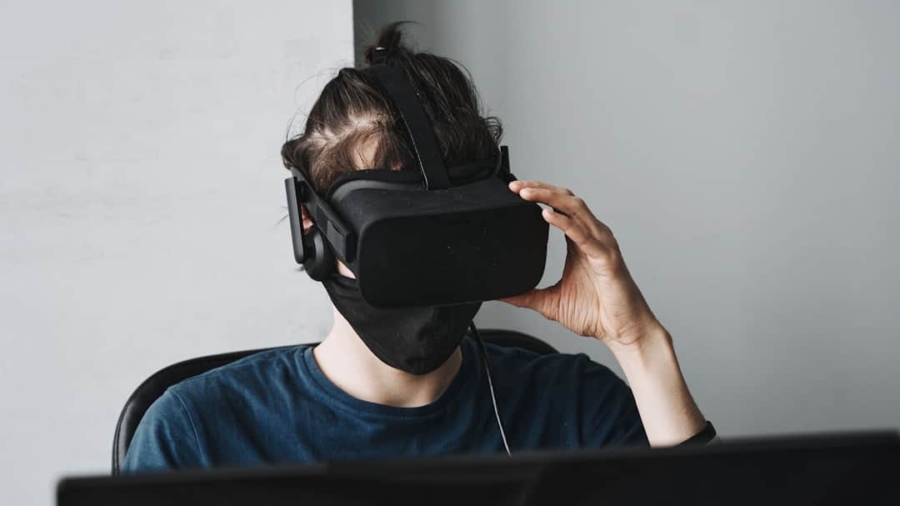Wireless technology has revolutionized the field of live interpretation, enabling seamless communication across language barriers in real-time settings. Traditionally, interpretation relied heavily on wired systems, which often limited mobility and flexibility for both interpreters and participants. With the advent of wireless technology, interpreters can now operate from various locations within a venue, providing a more dynamic and engaging experience for audiences.
Moreover, wireless technology facilitates the use of portable devices such as headsets and transmitters, which are essential for effective interpretation in large venues or outdoor events. These devices allow interpreters to deliver their translations directly to listeners without the interference of ambient noise.
This technological advancement not only improves the quality of interpretation but also fosters inclusivity, allowing diverse audiences to engage with content in their preferred language.
Key Takeaways
- Wireless technology allows for greater mobility and flexibility in live interpretation, enabling interpreters to move freely and provide services in various settings.
- Using wireless technology for multilingual interpretation can lead to improved communication, reduced equipment setup time, and increased participant engagement.
- Wireless technology enhances the quality of interpretation services by providing clear and reliable audio transmission, reducing background noise, and allowing for seamless integration with other audiovisual equipment.
- The efficiency of multilingual interpretation is significantly improved with wireless technology, as it enables quick setup, easy scalability, and the ability to accommodate multiple languages simultaneously.
- Wireless technology helps overcome language barriers by providing real-time interpretation, enabling seamless communication between speakers and participants of different language backgrounds.
Advantages of Using Wireless Technology for Multilingual Interpretation
One of the primary advantages of wireless technology in multilingual interpretation is its ability to enhance accessibility. In environments where multiple languages are spoken, such as international conferences or multicultural events, wireless systems allow for simultaneous interpretation without the need for cumbersome equipment. Participants can simply wear lightweight headsets that connect wirelessly to interpreters, ensuring they receive real-time translations without disruption.
This ease of use encourages greater participation from attendees who may otherwise feel intimidated by language barriers. Additionally, wireless technology supports a variety of interpretation modes, including simultaneous, consecutive, and whispered interpretation. This versatility is particularly beneficial in settings where different languages are spoken concurrently.
For instance, during a panel discussion with speakers from various linguistic backgrounds, interpreters can provide simultaneous translations to multiple groups using wireless transmitters. This capability not only streamlines communication but also enhances the overall experience for attendees, allowing them to engage with the content more fully and interactively.
How Wireless Technology Enhances the Quality of Interpretation Services
The quality of interpretation services is significantly enhanced through the use of wireless technology, primarily due to improved audio clarity and reduced latency. Traditional wired systems often suffer from issues such as signal interference and audio delays, which can compromise the accuracy of translations. In contrast, modern wireless systems utilize advanced digital transmission methods that minimize these problems, ensuring that interpreters deliver clear and immediate translations.
This immediacy is crucial in maintaining the flow of conversation and ensuring that participants do not miss critical information. Furthermore, wireless technology allows for better collaboration among interpreters. In multilingual settings, it is common for multiple interpreters to work together to provide comprehensive coverage of various languages.
Wireless systems enable interpreters to communicate discreetly with one another during events, allowing them to coordinate their efforts and share insights about specific terminology or cultural nuances. This collaborative approach not only enhances the quality of interpretation but also fosters a sense of teamwork among interpreters, ultimately benefiting the audience by providing a more cohesive and accurate translation experience.
The Impact of Wireless Technology on the Efficiency of Multilingual Interpretation
The efficiency of multilingual interpretation has been greatly improved by the integration of wireless technology into interpretation practices. One significant aspect of this efficiency is the reduction in setup time required for events. Traditional wired systems often necessitate extensive cabling and equipment setup, which can be time-consuming and cumbersome.
In contrast, wireless systems can be quickly deployed with minimal infrastructure, allowing event organizers to focus on other critical aspects of their programs. Moreover, wireless technology enables interpreters to adapt more readily to changing circumstances during live events. For example, if a speaker deviates from their prepared remarks or if an unexpected question arises from the audience, interpreters can adjust their translations on-the-fly without being hindered by physical constraints.
This flexibility is essential in fast-paced environments where timely communication is paramount. As a result, audiences benefit from a more fluid exchange of ideas and information, leading to a more productive and engaging experience overall.
Overcoming Language Barriers with Wireless Technology
Wireless technology plays a pivotal role in overcoming language barriers that often hinder effective communication in diverse settings. By providing real-time translations through portable devices, it empowers individuals who may not share a common language to engage meaningfully with one another. This capability is particularly valuable in international business meetings, diplomatic discussions, and cultural exchanges where clear communication is essential for collaboration and understanding.
In addition to facilitating direct communication between speakers and listeners, wireless technology also supports the inclusion of remote participants through virtual platforms. With the rise of hybrid events that combine in-person and online attendance, wireless systems can connect remote interpreters with on-site audiences seamlessly. This integration ensures that language barriers are minimized regardless of participants’ physical locations, fostering a more inclusive environment where everyone can contribute to discussions and share their perspectives.
The Future of Multilingual Live Interpretation with Wireless Technology
As technology continues to evolve, the future of multilingual live interpretation looks promising with advancements in wireless solutions. Innovations such as artificial intelligence (AI) and machine learning are beginning to play a role in enhancing interpretation services further. For instance, AI-driven translation tools can assist interpreters by providing real-time suggestions for terminology or context-specific phrases based on vast databases of linguistic data.
This support can help interpreters deliver more accurate translations while allowing them to focus on the nuances of live communication. Moreover, the integration of augmented reality (AR) and virtual reality (VR) technologies into interpretation practices holds exciting potential for immersive multilingual experiences. Imagine a scenario where participants at an international conference can don AR glasses that provide real-time translations superimposed on their field of vision while they engage with speakers and other attendees.
Such innovations could redefine how we approach multilingual communication, making it more interactive and engaging than ever before.
Best Practices for Implementing Wireless Technology in Multilingual Interpretation
To maximize the benefits of wireless technology in multilingual interpretation, several best practices should be considered during implementation. First and foremost, thorough planning is essential. Event organizers should assess the specific needs of their audience and determine the appropriate technology that aligns with those requirements.
This includes evaluating factors such as venue size, expected number of languages, and the type of interpretation needed—whether simultaneous or consecutive. Training is another critical component in ensuring successful implementation. Interpreters must be familiar with the wireless equipment they will be using to avoid technical difficulties during live events.
Conducting practice sessions prior to the event can help interpreters become comfortable with the technology and troubleshoot any potential issues that may arise. Additionally, providing clear instructions for participants on how to use headsets or other devices will enhance their experience and encourage active engagement.
Considerations for Choosing the Right Wireless Technology for Live Interpretation Services
Selecting the right wireless technology for live interpretation services involves careful consideration of several factors. One key aspect is audio quality; high-fidelity sound is crucial for accurate interpretation. Systems that utilize digital transmission methods tend to offer superior audio clarity compared to analog systems, making them preferable for professional settings.
Another important consideration is range and connectivity. The chosen system should have sufficient coverage to accommodate the venue’s size while maintaining a stable connection between interpreters and listeners. Additionally, compatibility with various devices—such as smartphones or tablets—can enhance flexibility and accessibility for participants who may prefer using their own equipment.
Finally, reliability and support are paramount when choosing wireless technology for interpretation services. Opting for reputable vendors who provide robust technical support ensures that any issues can be promptly addressed during events, minimizing disruptions and maintaining a high standard of service throughout the interpretation process. By carefully evaluating these factors, organizations can select wireless solutions that effectively meet their multilingual interpretation needs while enhancing overall communication experiences.
If you are interested in learning more about the latest trends in technology, you may want to check out this article on the best Lenovo laptops. This article discusses the top laptops from Lenovo that are perfect for professionals who need reliable and efficient devices for their work. These laptops could be essential tools for live interpreters who rely on wireless technology to provide multilingual interpretation services.
FAQs
What is multilingual live interpretation?
Multilingual live interpretation is the process of translating spoken language in real-time from one language to another during live events, meetings, or conferences.
How does wireless technology support multilingual live interpretation?
Wireless technology supports multilingual live interpretation by enabling interpreters to transmit their translations directly to the audience’s devices, such as smartphones or tablets, using a dedicated app or wireless receiver.
What are the benefits of using wireless technology for multilingual live interpretation?
Using wireless technology for multilingual live interpretation allows for greater flexibility in venue setup, eliminates the need for bulky equipment, and provides a more seamless and discreet experience for event attendees.
What types of wireless devices are commonly used for multilingual live interpretation?
Common wireless devices used for multilingual live interpretation include smartphones, tablets, and wireless receivers that can connect to the interpreter’s audio feed.
Are there any limitations to using wireless technology for multilingual live interpretation?
While wireless technology offers many benefits for multilingual live interpretation, potential limitations may include connectivity issues, compatibility with different devices, and the need for reliable internet or wireless networks.



